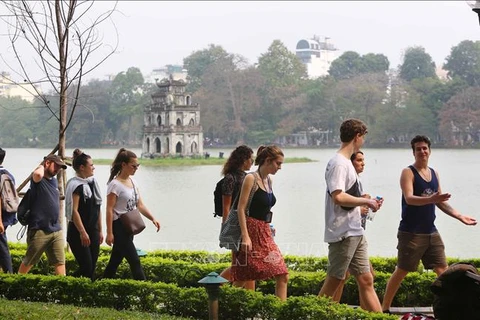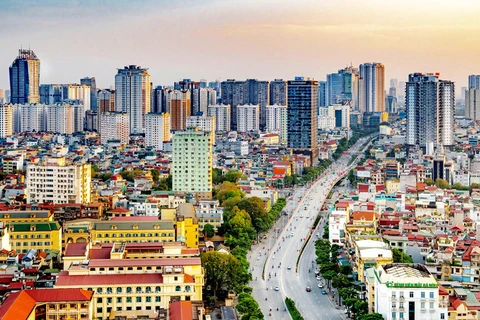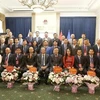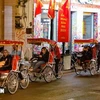Hanoi (VNA) – After 15 years of expanding its administrative boundaries, the capital city of Hanoi has shown a new face, becoming greener, cleaner, more beautiful, civilized and modern.
Following the expansion, Hanoi has been the locality with the highest number of communal administrative units. In order to restructure its socioeconomic space, the city has mobilized resources to conduct planning and develop technical infrastructure system, giving a facelift to the city.
After the master planning for the construction of the capital city until 2030 with a vision to 2050 was approved by the Prime Minister, the city has broadened its transport infrastructure network as well as the irrigation, school, hospital and health care systems.
After 15 years, many urban areas have been developed in all four directions, along with many shopping and entertainment centres.
Currently, the city has focused on turning rural districts of Dong Anh, Gia Lam, Thanh Tri, Hoai Duc and Dan Phuong into urban districts, while continuing to expand urban areas in the north with a number of projects, including a North Hanoi Smart City, a national conventional and exhibition centre, an outlet trade complex, as well as the development of areas along Nhat Tan – Noi Bai roads. The city is investing in boosting a systematic infrastructure system to develop Hanoi into a smart city in the near future.
According to President of the Vietnam Urban Planning and Development Association Dao Ngoc Nghiem, the presence of new urban areas in Hanoi has positively contributed to meeting housing demands and at the same time promoted economic development and formed better living conditions for local residents.
Along with investing in activities to make the city greener, cleaner, more beautiful, civilised and modern, the city has launched a number of projects to build large lakes and parks in all areas across the city, creating more green spaces for locals and improving their living environment.
At the same time, the city has developed entertainment and cultural spaces for local residents, including the opening of more pedestrian streets, including those around Hoan Kiem Lake and Thien Quang Lake and at Thong Nhat park, Trinh Cong Son street and Son Tay ancient citadel.
Electric lines and telecommunications cables have been put underground, an abundance of trees have been planted along streets.
Particularly, after 15 years of expansion, the transport system of Hanoi has developed strongly, helping strengthen the city’s connections with other localities and contributing to promoting local socioeconomic development.
A series of large traffic projects have been implemented to increase the capital’s connections with other cities and provinces, including the expressways of Hanoi - Lao Cai, Hanoi - Hai Phong and Phap Van - Cau Gie, along with Thang Long Boulevard, Nhat Tan Bridge, Vo Nguyen Giap street, and Cat Linh - Ha Dong urban railway project. Besides, many new inner city transport projects have also been put into operation.
Currently, Hanoi has seven radial roads with a total length of 111.32 km running through the city, along with eight radial national highways with a total length of 244.58 km. Meanwhile, the construction of 132.26 km out of the planned 285.46 km of seven ring roads has been completed.
The city has also paid great attention to public transportation. As of July 2023, the bus public transport network in Hanoi had had 154 routes, with 2,279 vehicles. In 2022, the volume of public passenger transport by bus reached 340 million passengers, of which 334 million passengers used subsidized buses.
Vice Director of the Public Transport Management Centre of Hanoi Thai Ho Phuong said that currently, the bus transport network of Hanoi has reached all 30 districts and townships, and 512 out of 579 communes, wards and towns as well as seven nearby localities./.

























